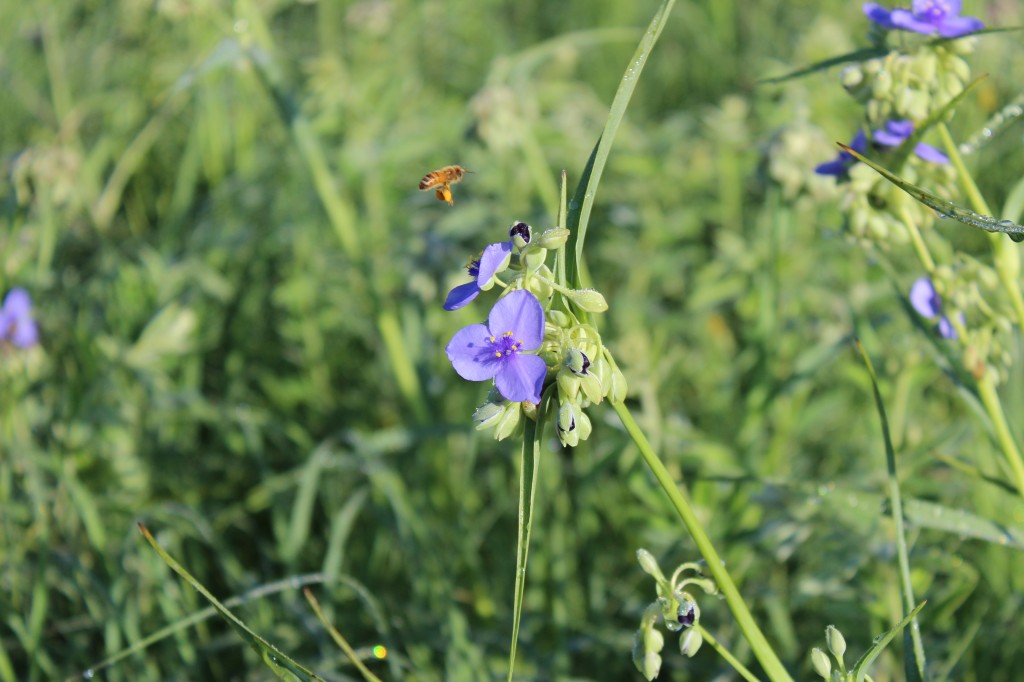How to start a backyard prairie
By Kerri on March 28, 2016 in Blog
So, you want to start a backyard prairie? We can help. This guide will walk you through the basic steps of preparing, planting, and maintaining your own mini prairie or prairie garden.

Benefits
From a visual standpoint, native grasses and forbs can be beautiful additions to any landscape–think prairie roses, pale purple coneflowers or butterfly milkweed. Prairie plants also create vital habitat for native birds, butterflies, insects and other species. Take the Monarch butterfly for example: it’s an important native pollinator and relies on milkweed plants for its survival. Blank Park Zoo’s Plant.Grow.Fly program offers tips for making your prairie especially pollinator-friendly.
After a few years, a backyard prairie can even be easier to maintain than a traditional lawn. There’s not much mowing involved, and a prairie doesn’t require expensive pesticides or fertilizers.
Preparing the land
Scout out an open space that’s clear of other plants and in direct sunlight. Be aware of trees around the space as their shade can interfere with plant growth.
If you have a typical backyard, you’ll likely need to kill any grass cover before planting. There are several ways to do this, but a light herbicide treatment to rid the area of non-native plant cover will do.
Choosing Seeds
There are a number of factors to consider when choosing prairie seeds. First, you’ll want to figure out what type of soil you have. A dry soil that holds little water will work well for a variety of species, whereas a wetter soil will support a different range of plants. Matching the right seeds with the right soil will better the chance of your prairie’s success. It’s also crucial that you plant seeds of locally adapted species.
There are also many local garden stores that sell native prairie plant species ready for transplant. If you’re looking for specific species, call your local garden center or greenhouse to determine their supply and availability. If you choose to buy plants instead of seed (or a mix of both), make sure you’re buying plants without neonicotinoides, which have been linked to colony collapse disorder.
You’ll also want to concoct a balanced mix of grasses, sedges, and forbs. Pick a variety of forbs to create a diverse prairie. Not only will it be more aesthetically pleasing, but the greater the diversity, the more resistant the prairie will be to encroaching invasive species. A simple rule of thumb is to keep your grasses and sedges equal or less than your forbs mix.Grasses have a tendency to dominate forb species.
When it comes to actually buying seed, buy local. Your plants will grow stronger and healthier. Find a local seed dealer under “Custom Seeding” here.
How to plant
Prairie seeds can be planted year round, but for optimal results, plant sometime between late fall and late winter. In Iowa, that season runs from November to March.
Physically planting couldn’t be simpler. Scatter the seeds throughout the cleared area and let nature do the work. No need to till the seeds, in fact, burying them too deep decreases their chance of survival. You may need to water your prairie once a week if there’s no rain, just as you might water grass.
Upkeep
Especially in the first few years, your prairie will be susceptible to weeds and invasive species. As prairie plants become established, combat the problem by mowing or periodically hand-weeding the area.
Once your plants have become well-established, upkeep and maintenance are minimal. Be patient, as it may take some time (2-4 years) for your native plant community to thrive. But once it does, you will be rewarded with a backyard prairie that is both aesthetically pleasing to the community and ecologically important to pollinators and other critters.
Questions? Contact Land Stewardship Director Ryan Schmidt at rschmidt@inhf.org or 515-288-1846, ext. 13.
